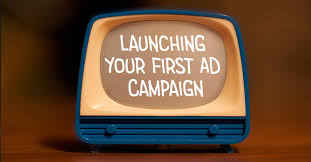Mastering Content Management: A Guide To Planning Your Content Calendar
In the fast-paced world of digital marketing, having a well-thought-out content management strategy is essential for staying organized, maintaining consistency, and driving engagement with your audience. Whether you're a blogger, influencer, or business owner, creating a content calendar can help you streamline your content planning process, ensure timely and relevant posts, and capitalize on key events, holidays, and trends. In this guide, we'll explore the importance of content management and planning, develop a content calendar for the next month, and discuss strategies for creating a variety of content types for different audiences.
The Importance of Content Management and Planning:
1. Consistency: Consistent posting is key to staying top-of-mind with your audience and building brand awareness. A content calendar helps you plan and schedule posts in advance, ensuring a steady stream of content.
2. Relevance: Planning content around key events, holidays, and trends allows you to stay relevant and timely, capturing your audience's attention when they're most engaged.
3. Organization: A content calendar provides a centralized hub for managing all your content ideas, scheduling posts, and tracking performance metrics. It helps you stay organized and focused on your content goals.
4. Efficiency: By planning your content in advance, you can save time and reduce stress by avoiding last-minute scrambling to come up with ideas or create posts.
Developing a Content Calendar for the Next Month:
1. Identify Key Events and Holidays: Start by identifying any relevant events, holidays, or trends happening in the next month. This could include national holidays, industry events, awareness days, or trending topics on social media.
2. Brainstorm Content Ideas: Brainstorm content ideas that align with the identified events and holidays. Consider how you can tie your content back to these themes while still providing value to your audience.
3. Map Out Posting Schedule: Using a calendar template (such as a spreadsheet or digital calendar tool), map out your posting schedule for the next month. Assign specific dates to each piece of content, including blog posts, social media posts, videos, and other content types.
4. Diversify Content Types: Ensure that your content calendar includes a variety of content types to keep your audience engaged. Mix it up with blog posts, videos, infographics, podcasts, and other formats to cater to different preferences.
5. Allocate Time for Creation and Promotion: Allocate time in your schedule for content creation, editing, and promotion. Factor in any additional tasks, such as keyword research, image creation, or outreach, that may be required for each piece of content.
6. Review and Adjust: Regularly review and adjust your content calendar as needed based on performance metrics, audience feedback, and changes in your marketing strategy or goals.
Strategies for Creating a Variety of Content Types:
1. Blog Posts: Write informative articles, how-to guides, listicles, or thought leadership pieces that provide value to your audience and establish your expertise in your niche.
2. Social Media Posts: Share engaging visuals, behind-the-scenes content, user-generated content, and curated industry news to keep your social media feeds active and vibrant.
3. Videos: Create videos that entertain, educate, or inspire your audience. This could include tutorials, product demos, vlogs, interviews, or live streams.
4. Infographics: Design visually appealing infographics to present complex information or data in a concise and easy-to-understand format.
5. Podcasts: Start a podcast to share insights, interviews, or discussions on topics relevant to your audience. Podcasts are a great way to build a loyal following and establish your authority in your niche.
Conclusion:
A well-planned content calendar is a cornerstone of effective content management, providing structure, consistency, and organization to your content strategy. By planning your content around key events, holidays, and trends, and creating a variety of content types for different audiences, you can keep your audience engaged, drive traffic to your website or social media channels, and achieve your content marketing goals. So, take the time to develop a content calendar for the next month, and watch your content strategy come to life with purpose and impact.



Comments
Post a Comment